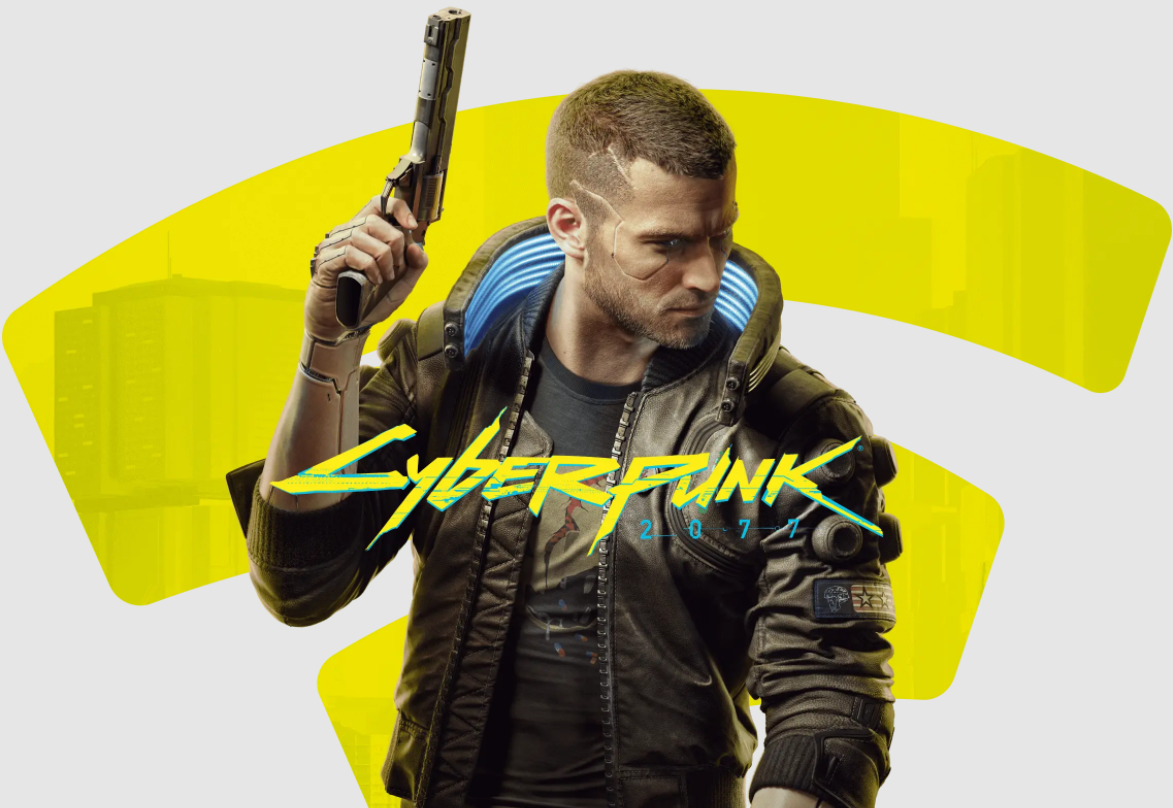Stadia's been able to secure precious few high-profile day-and-date multiplatform releases since its launch last November — Doom Eternal, Assassin's Creed Valhalla, and not many others. This week, the service landed its biggest yet: the hotly-anticipated Cyberpunk 2077. It's an enormous and ambitious game that's already developed a reputation for running poorly on most hardware. But while Stadia definitely isn't the best way to experience the sci-fi epic, it turns out it's far from the worst.
Cyberpunk 2077, if this is somehow the first you're hearing of it, is the newest game out of CD Projekt Red, the Polish studio most famous for the Witcher series of action RPGs. It's set predominantly in Night City, a future tech-dystopia with a Blade Runner/Ghost in the Shell/Deus Ex flavor, where people with high-tech prosthetics grafted onto their bodies commit crimes at each other. Also, Keanu Reeves is there.
Left: Graphics mode. Right: Performance mode. Notice the difference in lighting on the food in the counter.
Left: Graphics mode. Right: Performance mode. Notice the difference in lighting on the food in the counter. The atmosphere in Night City is wonderfully realized; the streets are bustling with activity. When you look closely, the illusion starts to fade — a lot of doors are locked and a lot of NPCs don't have anything interesting to say. But CDPR did an admirable job of conveying the general vibe of a gritty, crime-filled future that's just far enough removed from our present to feel exotic without being entirely alien. Impeccable sound design really helps sell it, too: I've been continually impressed by textured and organic-sounding environmental noise and the engaging and dynamic soundtrack. If you don't have good speakers handy, I highly recommend headphones.
Voice performances are less impressive, though. The masculine variant of player character V in particular is played as a paint-by-numbers tough guy, and Keanu's performance feels a little wooden, too (although that's not really uncharacteristic). They're not bad, certainly not by industry standards, but they don't hit the transcendent highs of, say, a good Rockstar game. Considering the long and troubled development of the game (it was first teased in early 2013!), that's kind of a shame. The world's jargon feels a little forced at times, too: surgeons who install cybernetic implants, for example, are "ripperdocs." So sick.
Left: Graphics mode. Right: Performance mode. Some shadows are lost in performance mode.
Left: Graphics mode. Right: Performance mode. Some shadows are lost in performance mode. Despite the game's first-person perspective and all the guns, Cyberpunk is not a traditional first-person shooter. Like the Witcher series, it's an RPG, complete with experience points, levels, and player and item stats. That's a little jarring at first — in the early game, multiple headshots on even run-of-the-mill enemies don't necessarily translate to a kill, only extra damage points. There are tons of options and menus and systems to the point of being a little disorienting, and I wonder if all that complexity will end up being worth the trouble; I bet I could get through the game just fine without ever learning half of what I can do. Still, if that's your jam, there's plenty for you to sink your teeth into.
Left: Graphics mode. Right: Performance mode.
Left: Graphics mode. Right: Performance mode. After spending a few hours with the game on Stadia, it's clear this version is not the boundary-pushing experience you'd get on a high-end gaming PC, but it's a surprisingly competent port. The bugs are there, obviously, but frame rates are stable and load times are mercifully brief. You've got the option to play in modes that prioritize either graphics or performance; graphics mode is capped at 30 frames per second, performance can hit 60.
Because Stadia always streams at the highest resolution allowed by your display and settings and always captures screenshots at 1080p regardless of the resolution your game is rendered at, I can't say with 100 percent certainty what the resolution in graphics mode is, but eyeballing it on a 4K TV, I'd guess 1080p (update: I've since learned that graphics mode maxes out at 4K, but it frequently downscales). To maintain 60 FPS, performance mode renders at a lower resolution and scales back lighting effects. If you're comparing the two side by side, you can spot the differences, but in motion, I think performance mode's added smoothness is worth the ding to visual fidelity.
As far as I can tell, visuals are about on par with the console versions of the game, and performance is actually better than on the last-gen Xbox One and PlayStation 4. If you have a PS5, an Xbox Series X, or an up-to-date, powerful gaming rig, you should go ahead and play Cyberpunk 2077 there. But considering how hard to come by (and expensive) new consoles and graphics cards are right now, odds are pretty good you don't. If you're in that boat, you shouldn't hesitate to grab Cyberpunk on Stadia — it's a totally fine way to play the game.
Left: Graphics mode. Right: Performance mode.
Left: Graphics mode. Right: Performance mode. Cyberpunk 2077 is available on Stadia for right now, and no subscription or special hardware are required to play it. If you pick it up by December 18, Google will even throw in a free controller and Chromecast Ultra so you can play on your TV.

